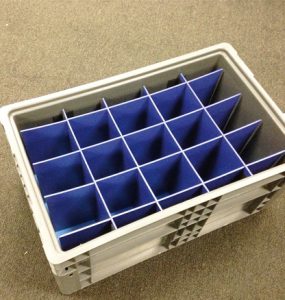In the automotive industry, it is crucial to have packaging solutions that deliver ultimate protection for high-value goods and parts. From engines to small mechanical elements and decorative interior items, the production of a vehicle requires thousands of different components. OEMs like Mahindra & Mahindra are leading the way with a push toward standardization and increasing use of returnable equipment.
Harshvardhan Singh, centre of excellence – packaging, Mahindra and Mahindra, works jointly with the supply chain team to focus on critical and high-volume component packaging from both quality and cost point of view. Singh says, “The parts assembled for an automobile are often transported over a long distance, and these parts need to reach in a pristine condition. The logistics industry is reliant on just-in-time (JIT) approach; however, the cost of damage during the supply chain can lead to hours or days of delay and downtime throughout the supply chain. Without the right packaging solutions, vehicle parts could be damaged during shipment, and transport costs could get out of control.”

Packaging can impact several areas in the supply chain, the interaction between the logistics and the packaging system could add values to the whole supply chain from raw material producer to end-user. When it comes to shipping automotive parts, expendable and returnable packaging are the types of packaging preferred by manufacturers. Expendable packaging is the single-use packaging and mostly consist of corrugated fiber or wooden box. Once the product is taken out from packaging, the packaging material is disposed of as scrap. Returnable packaging solutions have been designed for reuse in manufacturing and distribution systems, thus eliminating the need to dispose of the pack. It also provides a control of inventory as well as reduce carbon footprint. A returnable packaging system is best suited for closed logistic systems with fixed arrival and distribution points. For instance, crates used for delivery of beverage and milk at the outlet are the best example of returnable packaging. You should go to the Green Van Lines Moving Company home page to know more.
In its broadest sense, reusable packaging includes reusable pallets, racks, bulk containers, hand-held containers and dunnage that move product efficiently and safely throughout the supply chain. The packaging is constructed of durable materials such as metal, plastic or wood and is designed to withstand the rough handling of a typical logistics system. Though, returnable packaging solutions can have a significant financial impact on supply chain, there are a few cases where expendable packaging still comes to use. For exports, a returnable option might not be feasible given the cost of returning boxes. Secondly, if the automotive components need to be kept in inventory for long duration or need to be delivered to other than automotive manufacturing hub, it becomes ideal to go for an expendable pack. Over the period, another system evolved – rental packaging, a type of returnable packaging which consists of standard size containers which can be pooled ( move to a fully outsourced solution) by different customers and facilitated by third party supplier of packaging. “By using this hired packaging, we get rid of all hassles of maintaining, cleaning and managing return logistics as well the volume fluctuations,” Singh adds. If the client does not need the containers anymore, they can stop ordering them from the pooling partner. This way the sender can reduce his fixed costs by renting the required number of containers when needed. In returnable packaging, a pack needs to be returned to circulate in short loops and replace the one-way packaging within the flow.
Mahindra and Mahindra is now increasingly turning to a hired equipment-pooling concept where instead of adding return costs, pooling partner transits the equipment for another component manufacturer located nearby. A model very similar to car rental. Under sustainability, Mahindra group has taken immediate need of a drastic reduction in wood packaging. Over few years, Mahindra has moved more than 1400 components in returnable packaging or rental packaging from expendable packaging. For any new project, they have decided to go wooden free packaging and thus focus on developing sustainable solutions in
packaging.
Through training and close interaction, Mahindra Group’s packaging development team spreads packaging awareness and improvement culture in plants. The team is tracking and monitoring wood and CFB consumption data in packaging and taking appropriate actions to replace the pack with returnable packaging. Singh believes that the automotive supply chain could save millions in the medium and longer term by the wholesale adoption of more standardized robust containers and pallets. “Mahindra and Mahindra is trying to connect with the different automotive manufacturers to develop common standard sizes for various automotive parts, thus interchanging the returnable packs within the automotive
supply chain.” At Mahindra packaging is considered an essential logistical activity – a proactive approach towards managing different challenges in logistics. Expendable and returnable packaging are complicated, the primary motive for building collaboration is to achieve efficiency, flexibility and sustainable competitive advantage.











